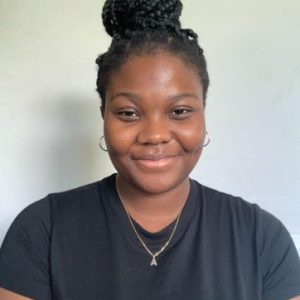Curiosity is at the heart of learning. And what do content marketers do? Help their target audience learn more about what they’re interested in. Ashley Blackburn knows this better than most, having worked in education before becoming head of content at Herrmann International.
Ashley’s professional interest has always been about learning and understanding the “how” and “why” of people’s thinking, learning processes and actions. Whether it’s how they operate in an educational setting or a professional one, having the deeper understanding of the “why” and “how” is how Ashley connects with her team and audience.
For 15 years, Ashley’s roles have been centered on experiential learning initiatives. During her time as associate director of experiential learning at Dartmouth College, Ashley elevated learning by creating hands-on experiences where students got to the root of common processes, making it easier to apply what they learned to real-world situations. Later, as program director at Uncharted Learning, Ashley created opportunities for elementary and high school students to become real entrepreneurs. It also provided an unexpected lesson for Ashley, when she discovered Whole Brain® Thinking.
Now, as Herrmann’s head of content, Ashley still gets to be a part of the learning process, just in a different way. Ashley knows that learning happens everywhere and at any time.
That’s why we invited Ashley to speak at Managing Editor Live 2022, where she’ll share how content marketers can benefit from Whole Brain® Thinking. Ahead of her session, we caught up with Ashley to learn more about her approach to learning and content.
Tapping Into People’s Curiosity
Consolidating formal education to set stages in our lives can cause us to forget that “people are innately curious,” regardless of age, Ashley says.
“As people, we like to learn; that’s how we move through the world,” Ashley says. “I think what employers and marketers have to do is remember, ‘How do we tap into people’s inherent curiosity?’”
Curiosity and learning go hand-in-hand. Anticipating questions from your audience by providing answers that satisfy that urge to learn can help you engage your audience and create a dialogue.
Ashley’s work with experiential learning taught her to envision the big picture while helping students connect with learning outcomes and engage with each other.
Now she’s bringing that experience to her role as head of content, where she has the power to satisfy curiosity through quality content, but more importantly to create opportunities for engagement.
“In a marketing campaign, we need to look at the whole ecosystem of what we’re putting out there and make sure that we have opportunities for all people to engage with us in their own way,” she says.
Translating Self-Awareness Into Awareness of Others
As Ashley learned, Whole Brain® Thinking has the capacity to unlock your self-awareness. She saw first hand how this model improved self-awareness in teams, which prompted them to treat others with greater intention. And that has huge ramifications for creating content that meets your audience where they are.
As someone with a strong preference for experimental thinking, Ashley wants messaging that addresses the “why” behind the topic, but has learned that other people have different needs.
“I have to remember, when I’m writing for other people, not everyone operates that way. And if I want to make all people curious, I need to remember to touch on the data and the facts,” Ashley says. “Which, for some people, that is their ticket to curiosity and learning and engagement.”
Self-awareness fosters awareness of what makes other thinkers unique, and that can help marketers approach content with greater intention.
“It helps you kind of step outside of yourself, which we’re always doing in the marketing space, and think: ‘How do I craft messages that are going to resonate with people who are not like me?’” Ashley says. Being deliberate can help you incorporate different nods to different types of thinkers in your content, empowering you to foster more meaningful content and attract your audience’s attention more quickly.
How Cognitive Diversity Improves Inclusion
Self-awareness, and the sense of respect it fosters for our individual differences, isn’t just beneficial at the individual level. It can benefit content marketing teams at the structural level, too.
Cognitive diversity, which looks at the different ways people think and acknowledges that we all approach the world in different ways, can provide an entry point to introducing or expanding broader DEI efforts within an organization.
One of the reasons why Ashley is interested in Whole Brain® Thinking is because the educational programs she oversaw effectively used cognitive diversity to open the door to better, more authentic inclusion of other facets of diversity, too.
Ashley offers an example. After exploring the power of Whole Brain® Thinking as a team, there can be an ‘Aha’ moment of “Oh, I see diversity makes our team better when we talk about thought. Now let’s also talk about how that applies to every other form of diversity and identity that people bring in to contribute to this space.”
Coupled with self-awareness, embracing cognitive diversity can create a more inviting and inclusive atmosphere for your team. And when every voice is heard, you can drive better outcomes and meet the needs of a diverse audience more effectively.
Register for our Managing Editor Live Fall Summit to learn more from Ashley and other change-makers in content marketing.






